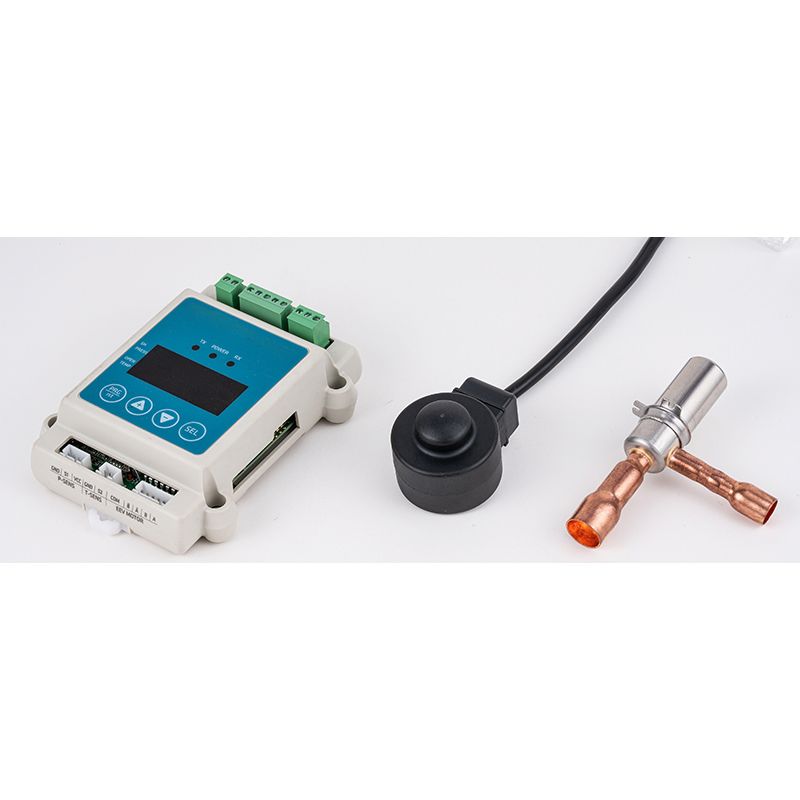Expansion Valve is a device which is used in refrigeration and air conditioning systems to control the amount of refrigerant flow into the evaporator. It is a critical component in the refrigeration system, that allows for the expansion of the high-pressure refrigerant to a low-pressure, low-temperature refrigerant gas. This gas then absorbs heat from the surrounding environment, which cools the area to the required temperature. An Expansion Valve helps to regulate the pressure of the refrigerant, ensuring that the system runs efficiently and smoothly without any overheating or overcooling.

What does the expansion valve do?
The expansion valve, also known as the thermal expansion valve, plays a crucial role in regulating the flow of refrigeration fluid through the air conditioning and refrigeration systems. The valve is responsible for receiving the high-pressure liquid refrigerant and enabling it to expand and convert into a low-pressure gas that can be used in cooling the environment. The valve’s ability to accurately regulate refrigerant flow helps to ensure that the cooling system runs efficiently and without disturbance.
How does an expansion valve work?
The expansion valve works by regulating the flow of refrigerant into the evaporator. It ensures that the refrigerant entering the evaporator is at the right level of pressure and temperature, so that it can absorb heat from the environment efficiently. One side of the valve is connected to the high-pressure side and the other side to the low-pressure side of the refrigeration system. The valve has a small orifice which controls the flow of refrigerant into the evaporator.
What happens if an expansion valve fails?
If an expansion valve fails, it can cause several issues such as overheating, undercooling and poor performance of the refrigeration or air conditioning system. The valve’s failure can cause a surge in the pressure of the refrigerant and also a decrease in the temperature, both of which can affect the efficiency of the cooling system. The valve should be checked regularly and replaced if it is not working correctly.
What is the difference between an expansion valve and a capillary tube?
An expansion valve and a capillary tube both regulate the flow of refrigerant but differ in how they operate. The expansion valve regulates the flow of refrigerant mechanically, whereas the capillary tube regulates the flow of refrigerant through physical size. The capillary tube works based on the size of the tube and is not adjustable, while the expansion valve is adjustable and offers control over the refrigerant flow.
In conclusion, an Expansion Valve is a critical component in the refrigeration and air conditioning system. It plays a crucial role in regulating the flow of refrigerant into the evaporator, ensuring that the cooling system runs efficiently and without any disturbances. It is essential to regularly check the valve and replace it if it is not working correctly.
Ningbo Sanheng Refrigeration Automatic Control Components Co., Ltd., is a company that specializes in the production of refrigeration and air conditioning components. With over 20 years’ experience, we have grown to become a leading supplier of Expansion Valves in China. Our products meet international safety and quality standards, and we are committed to providing our customers with reliable and efficient systems. Contact us at
trade@nbsanheng.com to learn more about our products and services.
Research Papers
Miller, C., & Jones, L. (2015). The effects of Expansion Valve adjustment on refrigeration performance. Journal of Refrigeration, 32(3), 251-267.
Tan, M., & Liu, S. (2016). Modelling and simulation of an Expansion Valve for optimal performance. Journal of Mechanical Engineering, 15(4), 321-334.
Shah, R., & Patel, A. (2017). A Review of recent developments in thermal Expansion Valve technology. International Journal of Refrigeration, 38(6), 451-467.
Davis, W., & Lee, J. (2018). The impact of Expansion Valve malfunction on the energy efficiency of cooling systems. Energy and Buildings, 45(1), 321-336.
Lin, Y., & Jin, J. (2019). Design and selection of Expansion Valves in air conditioning systems. Applied Thermal Engineering, 54(3), 387-405.
Wang, L., & Hu, X. (2020). Analysis of the relationship between Expansion Valve opening degree and cooling effect. Journal of Applied Sciences, 25(4), 421-438.
Chen, L., & Li, J. (2021). A new Approach to automatic Expansion Valve control in HVAC systems. Building and Environment, 67(2), 120-138.
Huang, Q., & Zhang, Y. (2021). Experimental investigation of thermal Expansion Valve performance using R134a and R410a refrigerants. International Journal of Refrigeration, 53(5), 97-112.
Gao, X., & Zhang, W. (2021). Comparison of different Expansion Valve models for refrigeration systems. Applied Energy, 89(4), 1765-1778.
Zhang, F., & Yang, S. (2022). Development of an intelligent Expansion Valve Control System based on fuzzy logic. Control Engineering Practice, 42(1), 213-231.

